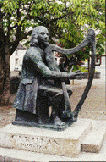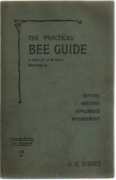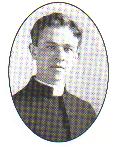Famous residents of Mohill
Famous residents include:
- Turlough O Carolan 1670-1738
- William Sydney Clements, (1806-1878) 3rd Earl of Leitrim (Lord Leitrim)
Fr. Tom Ellis.(1904-1945)- missionary priest to China
- Rev. J G Digges - father of Irish Bee Keeping
See also our photo gallery for "not so famous" past and present residents!
Turlough O'Carolan (1670-1738)

 Famous past residents include the harpist Turlough O Carolan (Toirdhealbhach
Ó Cearbhalláin) 1670-1738, to whom a statue has been erected in the town.
The statue (shown at left) is by sculptor Oisín Kelly (1915-1981) whose other works include the
statue of Jim Larkin in O'Connell St. in Dublin. He had also been working
on a statue of O'Carolan when he died. The unfinished plaster model was
prepared for casting by Lorna Skrine, who had been his assistant before his
death. The finished bronze was unveiled in Mohill by President Hillery on 10th
August 1986
Famous past residents include the harpist Turlough O Carolan (Toirdhealbhach
Ó Cearbhalláin) 1670-1738, to whom a statue has been erected in the town.
The statue (shown at left) is by sculptor Oisín Kelly (1915-1981) whose other works include the
statue of Jim Larkin in O'Connell St. in Dublin. He had also been working
on a statue of O'Carolan when he died. The unfinished plaster model was
prepared for casting by Lorna Skrine, who had been his assistant before his
death. The finished bronze was unveiled in Mohill by President Hillery on 10th
August 1986
See here for an extract from an article "The last of the Bards" by VERY REV. M. J. CANON MASTERSON .
A number of sites are dedicated to the life of O'Carolan - Rather than repeat some or all of the excellent work O'Carolan's admirers have gathered below, we merely link to their sites.
- Good bio and samples of music are at contemplator.com - this a very comprehensive site.
- A festival is held annually dedicated to O Carolan, one at Nobber and the other at Keadue
Italiano: "L'Associazione "Turlough O' Carolan"
- Some poetry, biographical information etc. collected here by Prof. Denis Doyle.
- Glen Weiser also has a dedicated page
- another one by Mike McCormack here
- The Complete Works of Turlough O'Carolan is available as a book.
- This site lists a large set of products (books and CDs) related to O'Carolan - see also here
Francais: see Pascal Bournet's site
Rev. J. G. Digges (1858-1933)

 Rev
Joseph .G. Digges lived at Clooncahir, Mohill. He is regarded as the
father of Irish Beekeeping.
Rev
Joseph .G. Digges lived at Clooncahir, Mohill. He is regarded as the
father of Irish Beekeeping.
Modern Irish beekeeping owes much to a local man, the Reverend Joseph Robert Garven Digges, who although born in Dublin, he spent much of his life in Mohill, Co. Leitrim. Educated at the High School of Erasmus Smith in Harcourt St., Dublin, he later entered Trinity College as a pensioner in 1879, being awarded the degree of B.A.(Resp.) in 1882 and in 1885 an M.A. Ordained in 1883, he became deacon in Kilmore, Co. Cavan, and then curate in Mohill until 1884 and then 1884-5 at St. George's, High St., Belfast. In 1885, he became the private chaplain to the Clements family (the earls of Leitrim) at their Lough Rynn estate at Mohill. He served Farnaght and Mohill churches and from 1933 the parish of Cloone.
The Reverend Digges had his first bee-keeping lesson in 1885, at Clooncahir, and thereafter was hooked. He joined the Irish Beekeepers Association and was chairman from 1910 to 1921. He was editor of the Irish Bee Journal, (from 1912 called The Beekeeper's Gazette) published from May 1901 to October 1933. In the 33 years of publication, he only missed 4 issues - the May 1916 issue was blown up on the way to the printers during the Easter rising of that year.
Becoming proficient in bee-keeping, and anxious to promote the method of removing the honey crop from the hive without killing the bees, by using moveable frames, he started travelling extensively throughout Ireland on behalf of the Department of Agriculture and Technical Instruction, attending agricultural shows and lecturing. He promoted the "Congested Districts Hive", Designed to me made and used in the poorer areas of Ireland to provide an income where the land was poor.
A great believer in promoting local industry, he helped to found the local co-operative creamery and the bank in Mohill, and was a director of the Cavan & Leitrim railway and also of the Arigna mines. Digges "was to earn high repute as a first class trouble shooter" (Flanagan, "Teh Cavan & Leitrim Railway" 1966) and was always sent in when problems arose.
He also published a book: The Irish Bee Guide, later renamed The Practical Bee Guide. A Manual of Modern Beekeeping, a book which came to be regarded as the standard book of bee keeping in Ireland. The book went through many revisions and reprints following its initial publication in 1904. It was self published in 1904 (by Lough Rynn Press), by the 4th edition in 1918, the publishers were Simpkin Marshall Hamilton Kent & Co. Ltd. London - later it was published by Talbot press, Dublin until its 16th edition in 1950. It sold 76,000 copies. The book was republished in 2004 to celebrate its centenary of publication.
He died dramatically during a confirmation service in Farnaght in 1933 and is buried in Mount Jerome cemetery in Dublin, beside his wife who had died in 1926. He had married Edith Bate in Belfast in 1885 and they had a son and daughter, spending their life in great comfort in the beautiful rectory at Clooncahir. A splendid stained-glass memorial window by Ethel Rhind (1877-1952) was placed in the church, which shows St. McDomnoc (Molagga) bringing the bees to Ireland.
This text is based on an article by Petra Coffey and email of Jim Ryan)
Fr. Tom Ellis (1906-1945) - St. Thomas of Mohill?
 Fr.
Tom Ellis was a Mohill-born, missionary priest, who died in 1945 in China.
He is revered in China and the cause for his canonisation is being actively
pursued.
Fr.
Tom Ellis was a Mohill-born, missionary priest, who died in 1945 in China.
He is revered in China and the cause for his canonisation is being actively
pursued.
One of a family of five, Tom was the son of leather merchant Richard Ellis, Main St. Mohill, Co. Leitrim and his wife Ellen Jane Mahon. He was born on January 12, 1906.
As a small boy, he was educated firstly as an infant in St. Josephs and then on to the Boy's school, Mohill and finally as a boarder in St. Mel's, Longford. He studied for the priesthood in Maynooth and was ordained in April 1931. Shortly afterwards, he set off from Cobh, Co. Cork for the missions in Nancheng (now Hanzhong) China, then only five years in existence.
On his first day in his new land, Fr. Tom met a man suffering from dysentery lying on the street, brought him back to the church and washed him clean, thus beginning his labours for those in want, a work that would continue until his death 14 years later. Such were the qualities of Fr. Tom Ellis that soon he was attracting large numbers of local people, in search of material and spiritual help. Three years after going to Nancheng, on Christmas Eve 1934, with Fr. Dennehy, a total of 133 Baptisms were performed. Fr. Tom's practical side saw him helping the local people through starting handicraft industries and technology projects.
In June 142, the Japanese army arrived in Nancheng, and life became more difficult for the population as a whole. Many stories are related of Fr. Tom's work in saving lives - on one occasion he stepped in front of Bishop Patrick Cleary while they were being shot at by the Japanese. He never spared himself and while giving a mission at Wangtien-Tang, he became ill, succumbing to typhoid fever on March 5th(or 8th) 1945.
The story is told that before he died, a Columban sister commented: "You work so hard, what saint will you be when you die?" to which he joked: "I'll be Saint Thomas of Mohill".
Soon after his death, it is said, he gave a sign to his fellow priests of impending trouble - just a month later, Bishop Cleary and all of the other priests were publicly tried and forced to flee China. The emergence of a communist government meant the suppression of Christianity. Despite this, believers flocked to Fr. Tom's grave in throngs, resulting in the desecration of the grave. His remains were removed to Shanghai for safety.
Bishop Cleary (1886-1970) later wrote a book on Fr. Tom and sent it to Rome, asking that Fr. Tom Ellis be canonised. A second book on his life, "Passing the Torch" has been written by Fr. Luke O'Reilly. It is claimed that two Chinese women, seriously ill have been cured after praying to him, an a Lutheran doctor, Dr. Otta Homberger and Dr. Yeh have confirmed the reality of the cures. A committee in Mohill is praying for his canonisation.
This is based on an un-credited article which appeared in "The Irish Family", February 7, 2003.
William Henry Drummond - born in Mohill on 13th April 1854.